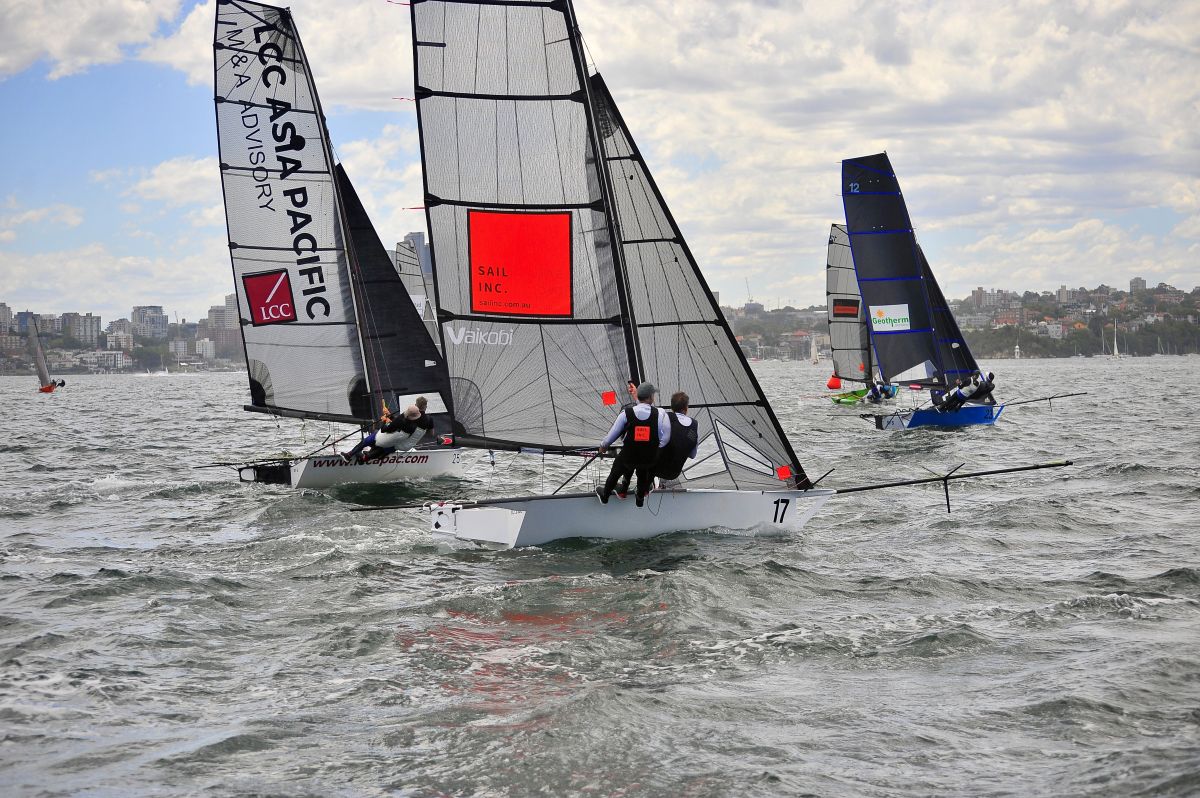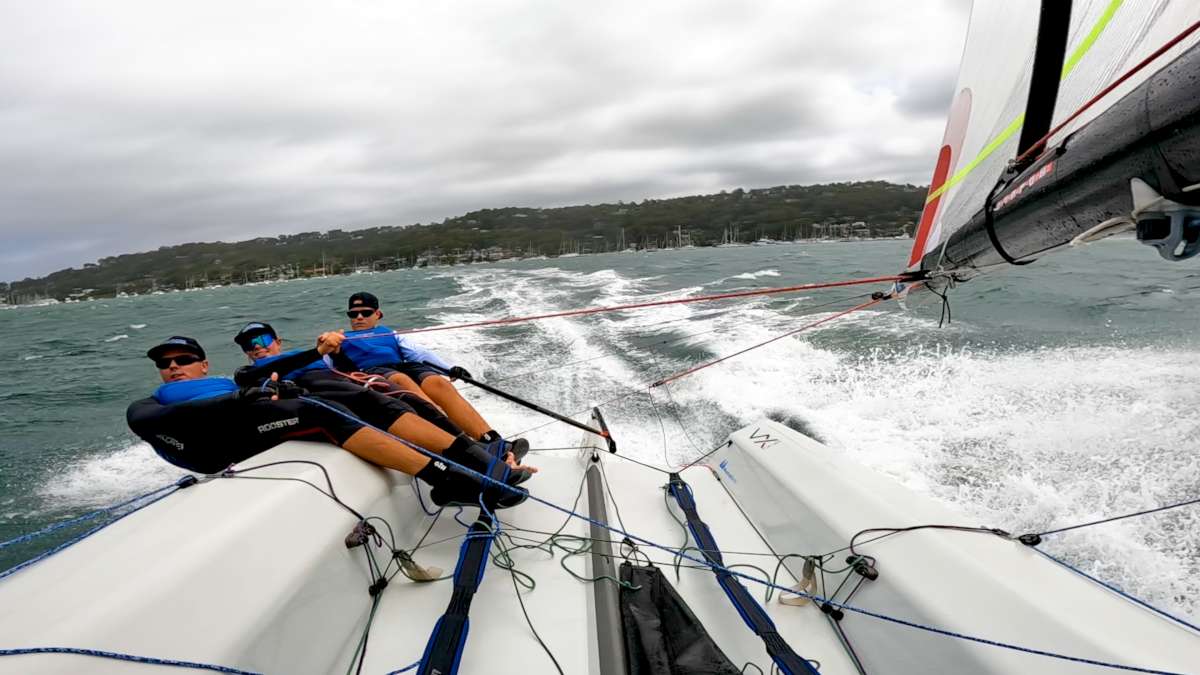Sailcare Tips by Norths
An ounce of prevention is worth a pound of cure.
Proper sail maintenance is easy and takes little time, and can make a big difference in the life and performance of your sails. Whether you have new racing or cruising sails that are several years old, a little care can maximise the value of your investment.
Avoid flogging
The best way to maintain the strength and shape of your sails is to minimise the amount of time they are flapping in the breeze. Flogging and leech flutter degrade cloth properties quickly, so every effort should be made to avoid these actions.
There are a few specific ways to increase the life of your sails. Don't motor into the wind at full throttle when hoisting your main. If you are powering with the main up, keep it trimmed so it doesn't flap. In heavy wind, reduce sail enough so you don't have to flog the main. Always keep your main and genoa leech lines tight enough to stop the leech from fluttering.
Don't exceed the recommended wind range
One of the quickest ways to destroy a sail is to use it in more wind than it was built for. The best way to avoid this is to stay strictly within the maximum wind speed recommended by your North sailmaker for each sail. Usually this limit is stamped on the clew of each racing headsail. If it isn't, find out what the maximum is from your sailmaker and write it on the clew so the crew knows each sail's range.
Reduce chafe
Chafe is another enemy of sails. The more a sail rubs against any part of the boat or spars, the sooner it is likely to show failure. There are a couple of good ways to extend the life of sails: First, avoid chafe whenever possible i.e. don't let the running backstays rub against the leeward side of the mainsail; don't drag sails over non-skid decks, around shrouds, or along the dock.
Second, when you can't avoid chafe, at least minimise it. Use tape or leather to cover spreader tips, stanchion tops?any part of your rig that constantly rubs on sails. This is especially important when using light sails such as spinnakers or light genoas. Check your boat for untaped cotter pins, sharp corners on fittings, unprotected burrs, screw heads, halyard hooks, etc. and tape them. Remember to check the front of the mast carefully, since your genoas drag across it every time you tack.
Finally, check all spreader and stanchion patches for wear, and to ensure they are in correct position.
Protect from the sun
Direct sunlight is one of the worst enemies of sails since it will eventually cause breakdown of the cloth. Therefore, your goal should be to keep your sails out of the sun whenever you are not using them. A roller furling headsail, for example, should definitely have UV material on its leech and foot for protection when it's rolled up. If you flake your main on the boom, always put a cover on it.
Store sails dry and flaked or rolled.
When not in use, your sails should be stored dry, free of salt, and flaked in their sailbags. Don't fold them on the same creases every time, as you will have eight or ten permanent creases instead of many light ones that gradually shake out by the time you reach the starting line. Most one-design sails will last longer if they are rolled in their sausage bags. It is also worthwhile to take extra care with Carbon sails, as Carbon fibre is an inherently brittle material, and flexing of the fibres breaks down the material. Avoiding unnecessary creasing (such as folding, bending or crew standing on sails), and rolling or flaking the sails out full length when storing, will help to prolong the life of the sails.
Store a spinnaker dry and loosely stuffed in its turtle or folded in its envelope bag. Don't store spinnakers wet for any length of time, as darker colours will bleed into lighter ones, and dampness promotes the growth of mildew.
Reduce batten tension when sail is unused
The tension used in battens when sailing can tend to stretch the batten pockets and sail when it is stored. Therefore, de-tension the battens or remove when storing the sails, and re-tension before sailing.
Sail and bag Zips
Regularly rinse zips with fresh water and lubricate with silicon spray up to every month depending on usage.
Specific sail needs
No matter what your sails are made of, there are a few guidelines you should follow to prolong the life of each particular sail.
GENOA
Using headsails in too much wind causes the most common sail damage.
Another common cause of damage is tearing or splitting caused by backing the sail against the spreader. Here are some good ways to prevent failure:
– Make sure your jib trimmer casts off the jib sheet early enough on the tacks and doesn't overtrim coming out of the tack;
– Don't use wheels, rollers or pads that extend the spreader tip beyond the shroud (less protrusion means less damage);
– Inspect seam stitching in spreader areas periodically;
– Keep the leechline tucked away in its pocket? not flying free.
If you have a grooved headstay, be sure to use the pre-feeder so you won't rip the luff tape. Don't trim on the sheet until the halyard is all the way to the top.
MAINSAIL
Mainsails take a lot of abuse because they are used in all conditions. Therefore, it's especially important to treat them carefully in order to maximise their useful life. As mentioned previously, the most important consideration is to avoid flogging. Some other ideas:
– Keep the leechline tight enough to stop flutter;
– Don't pull too hard on the Cunningham of a laminated sail;
– Ease the Cunningham before sailing downwind.
– Make sure the battens are inserted properly;
– Use coloured sailties when reefing so you won't miss them when unreefing, and make sure the sailties are around the sail only, not boom or sheets.
– Make sure the reefing line is led so you don't pull too hard on the foot.
– Spreader patches will help the main last longer when it is eased against the rig for running.
SPINNAKER
Nylon is relatively stretchy, so it's able to absorb large loads without breaking. However, spinnaker material is quite light and can easily fail from use in too much wind. Explosive refilling after a collapse is definitely a problem. Another common cause of failure in spinnakers is tearing on sharp objects. This often happens on sets, gybes or takedowns, so be sure that these areas are catch-free. You should also be sure that your genoa halyards are free of “meathooks” and that the pulpit doesn't have any snags.
ONE-DESIGN SAILS
Like all other sails, avoid flogging. Sometimes, such as starting, this is unavoidable, but in between races you should definitely drop your sails instead of letting them flap. It's a good idea to break new sails in for a few hours before using them in racing conditions. Yarn-tempered sails should be rolled when not in use. If your sail has a window, avoid storing it in high-temperature areas like car boots. A good way to keep sails salt-free is to put them up on a CALM day, hose them off and let them dry in place.
How to avoid mildew
– Ensure that the sails are aired regularly, especially after rain. This may mean unrolling the headsail at the mooring for an hour, on a calm, dry day.
– Exposure to sunlight is helpful but too much causes other problems.
– Do not put away damp or salty (the salt attracts and retains moisture), and store in a dry location.
– If the boat is to be left for more than a week or two, take the sail off the rig and store it dry, or arrange for somebody to air it regularly and especially after rain.
If mildew occurs…
Wash with soapy water. Any cleaning agents are potentially damaging for the sail.
























